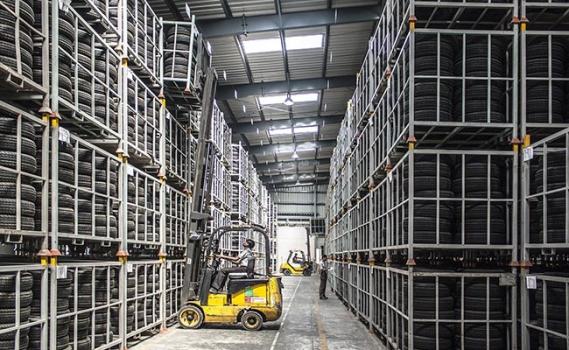A Cost-Effective Solution for Battery-Powered Lift Trucks

Description
Lift truck batteries are often taken for granted, treated as something that can be ignored until there's a problem. That’s unfortunate, since there are nearly a million battery-powered lift trucks at work in the United States alone. Unless these batteries are operating at peak efficiency, downtime begins and productivity suffers, threatening to negatively impact your company’s bottom line.
Lift truck battery chargers are often similarly ignored unless, or until, problems arise. Technological advances mean that today's lift trucks, and the demands they place on batteries, are different from those of a decade ago. Yet, even those who regularly update their forklifts often have 10 or 15-year-old chargers that no longer meet the requirements of today’s batteries. The vast majority of industrial battery chargers in use today are silicon-controlled rectifier or ferroresonant chargers. These charging types, collectively referred to as “conventional” chargers, have long been a reliable charging source for high-power applications. High frequency chargers, however, offer higher efficiencies in terms of energy costs, reduced downtime, and increased lift truck productivity.
So how exactly does conventional charging compare with high frequency charging?
Off-Peak vs. Fast Charging
Some facilities with very heavy lift truck usage are forced to swap out batteries daily due to the slow charging rates under conventional charging. This increases maintenance costs and interferes with productivity. High frequency fast and opportunity chargers, on the other hand, can recharge batteries three to five times faster than conventional chargers.
Better Power Conversion
High frequency fast chargers are capable of achieving higher power conversion efficiency than conventional chargers, in excess of 90% according to studies.1
Extended Battery Life
High frequency chargers extend battery life by keeping batteries cooler and requiring less frequent watering. "Smart charging" is another beneficial technology more often available in high-frequency chargers. Smart charging systems include remote monitoring capabilities that can perform a variety of functions, such as detecting rising temperatures and cutting back or stopping the charging process, protecting the battery. This is especially important in the last 20% of the charging process—also known as the finish charge—when most of the heat is generated.
Modular Designs
The modular designs of high frequency chargers provide maximum flexibility while eliminating downtime. These chargers adapt to a wide range of battery capacities, allowing potential reduction of the number of chargers in a fleet. Charger modules are automatically switched off and on based on charge cycle requirements in order to achieve optimum charging performance and maintain peak efficiency at all times. Should a module develop a minor fault, the charger bypasses the module for continued operation and continuation of the charging process without interruption.
High Frequency Fast Charging Means Better Business
As operational and energy costs continue to come under scrutiny, and lift truck and battery technology continues to advance, battery chargers will play a larger role in containing costs and maintaining productivity. Compared with conventional chargers, high frequency fast chargers may offer a better bottom-line return on your investment.
1 Pacific Gas and Electric Company (PG&E) Energy Technologies Program Application Assessment Report #0808:Industrial Battery Charger Energy Savings Opportunities/Ecos Consulting study of industrial battery chargers on behalf of PG&E (Ecos 2009) https://www.kannahconsulting.com/wp-content/uploads/2016/08/etcc_report_industrial_battery_chargers_final_v5.pdf
Authored by: Brian Faust, General Manager for Douglas Battery
